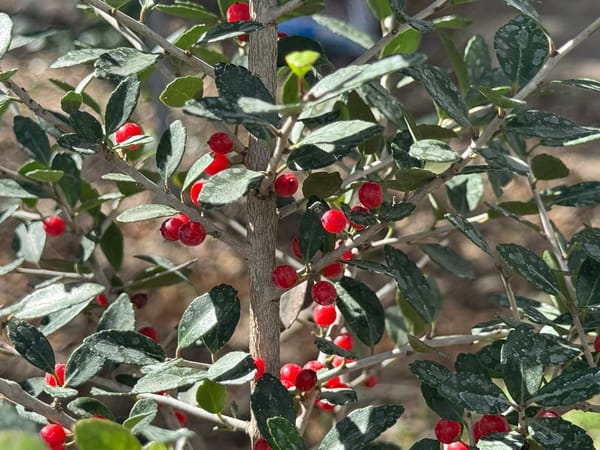Anacacho Orchid Tree (Bauhinia lunarioides)
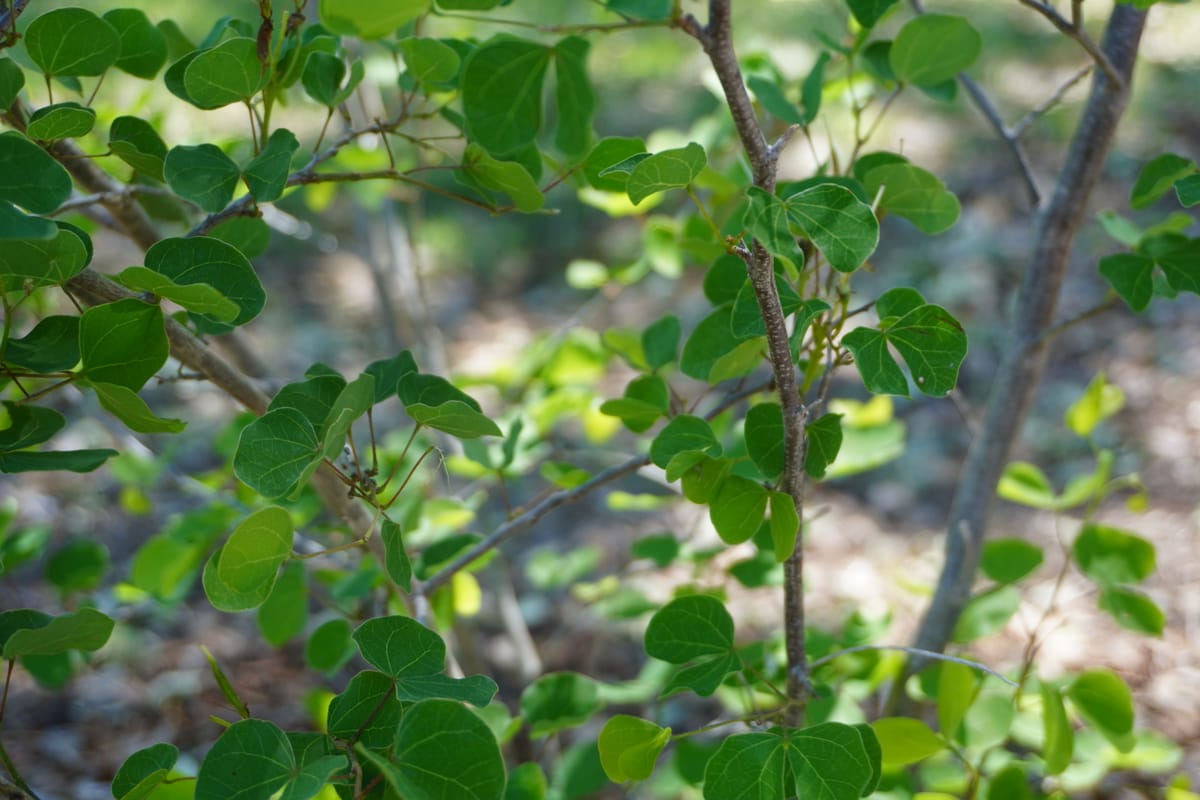
The Anacacho Orchid is a small tree native to Texas and Northern Mexico that's an interesting addition to any Texas native home landscape.
The Anacahcho Orchid doesn't take up too much space, it's spring blooms are prolific and it attracts pollinators. It's one of the more agreeable and interesting-looking small trees that you could add near a sitting area or any landscape focal point.
While it can tolerate a healthy amount of sun, as an understory tree, it doesn't mind and in might best thrive with a little shade. As a member of the pea family, the Anacacho Orchid tree is a nitrogen-fixer, meaning it converts nitrogen in the air into a usable form for other plants in the soil.
Some say its leaves resemble hooves, which explains one of its other common names, Pata de vaca.
Common Name(s): Anacacho Orchid Tree, Orchid Tree, Pata de Vaca
Latin Name: Bauhinia lunarioides (baw-HIN-ee-ah loo-nare-ee-OY-dees)
Height: 8' to 15'. Most often found at 10' - 12,' described as an excellent "Patio Tree."
Soil Conditions: It prefers rocky, drier, well-drained locations. Although we live on the Blackland Prairie, which has predominantly clay soil, our tree is doing well.
However, the site I chose to plant our tree is notably drier, and more gravelly for our property.
Water: Low water needs once established.
Light: Full sun to part or dappled sun.
Family: Fabaceae (Pea family).
As a legume, the Anacacho Orchid tree is a nitrogen-fixer, meaning it will return nutrients to the soil that the other plants around it.
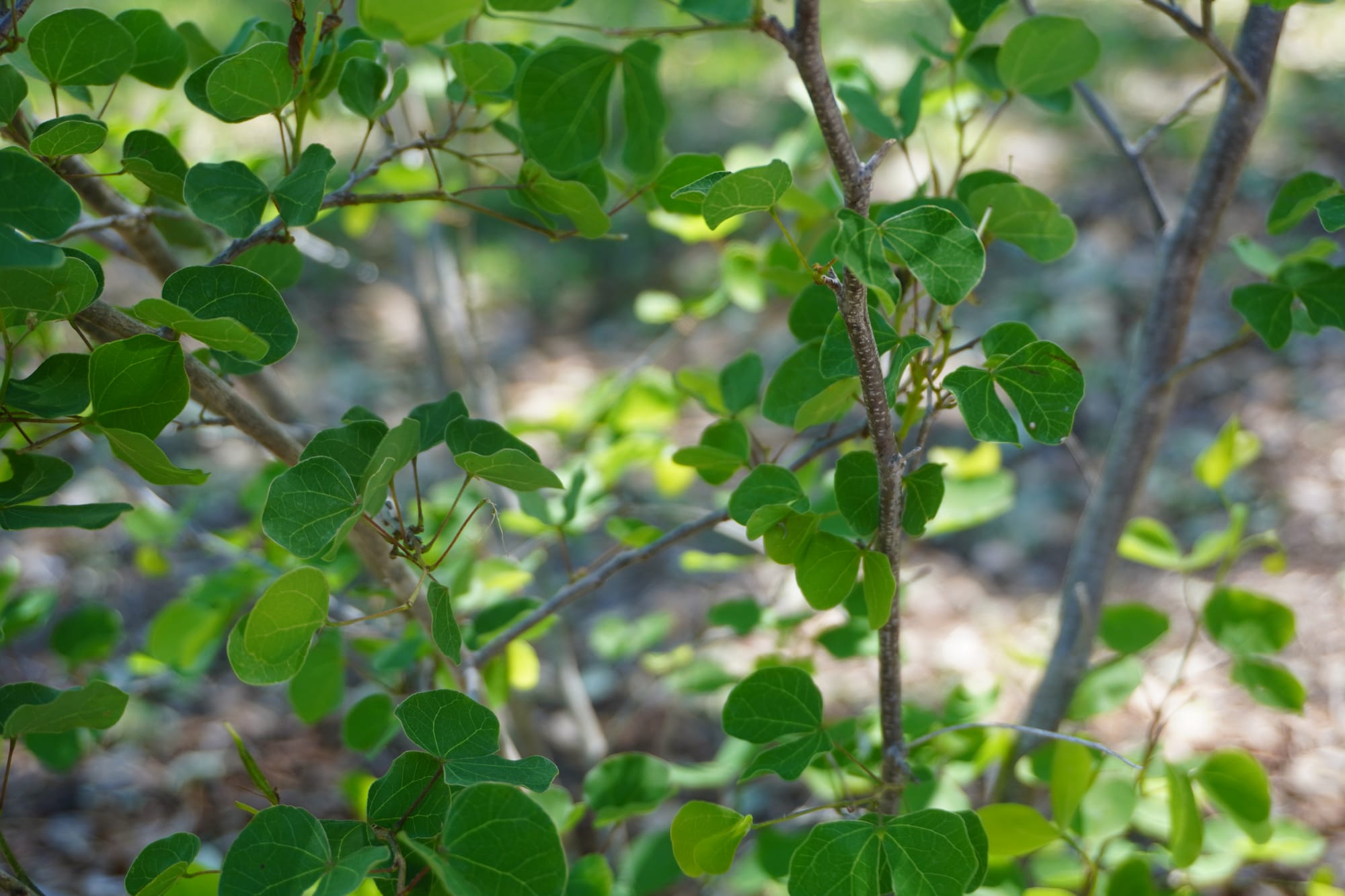
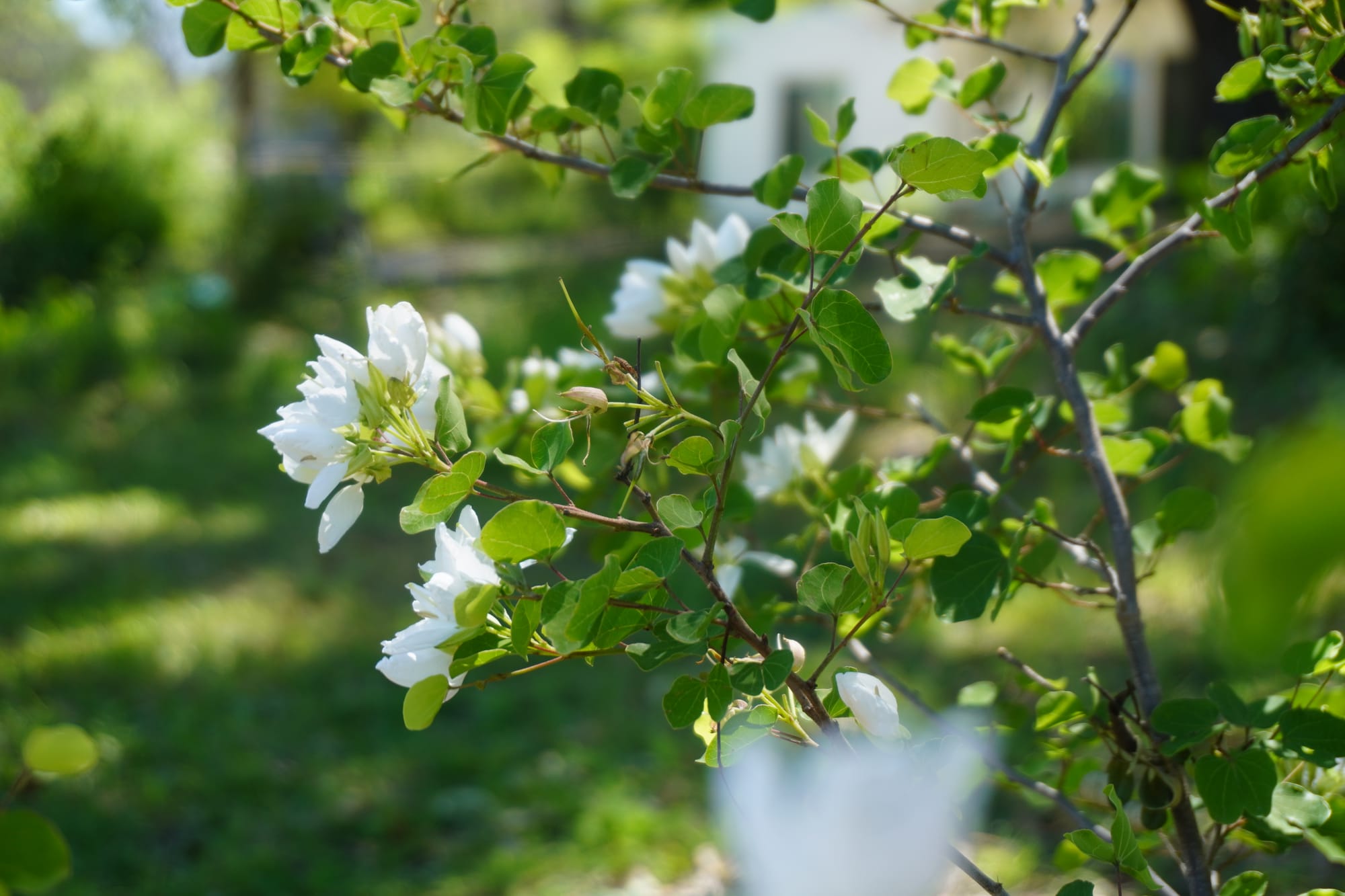
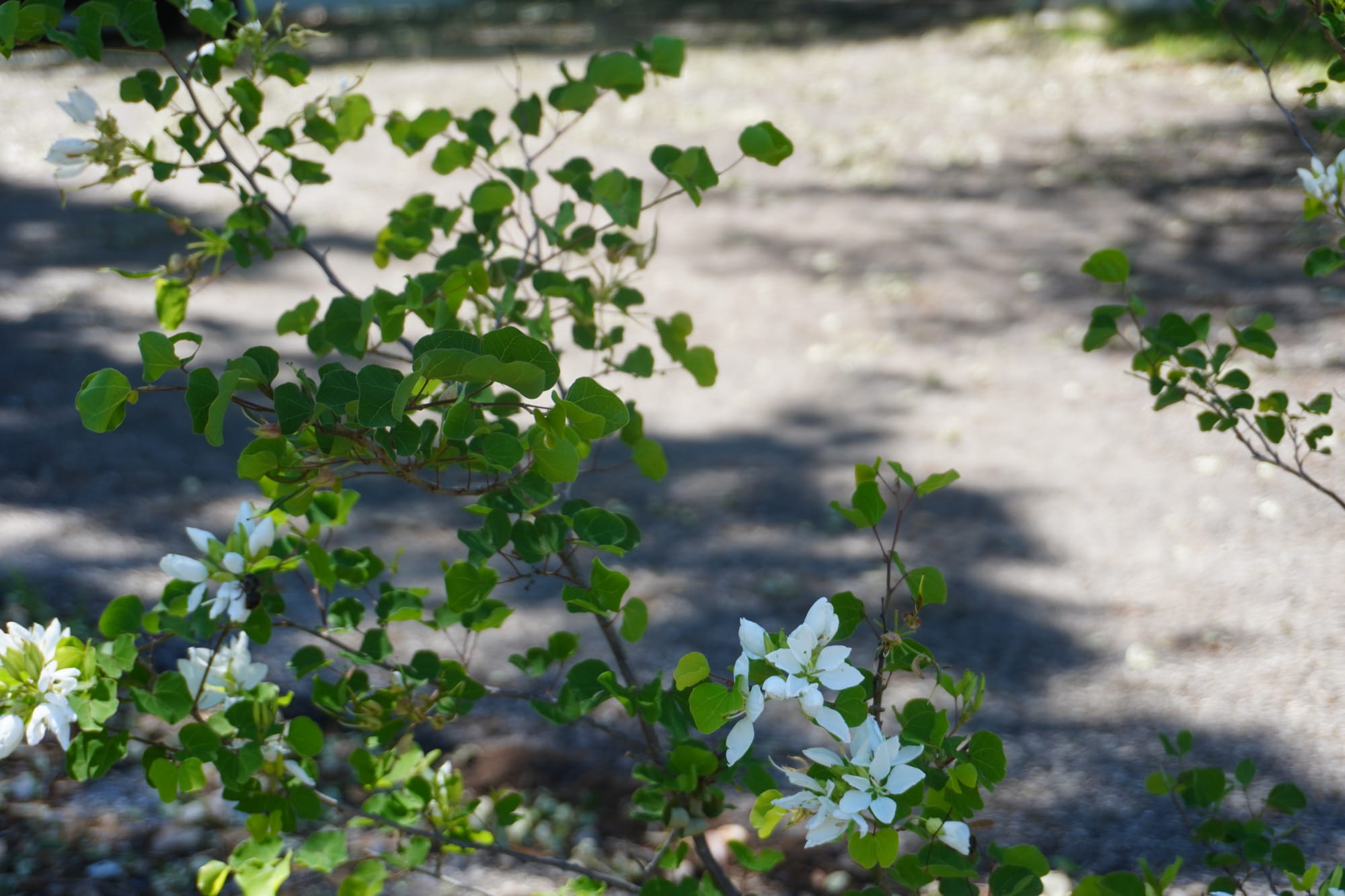
Distribution:
Where is the Anacacho Orchid Tree native?
The Anacaho Orchid tree is rarely observed in the wild in Texas, it's considered a a rare tree. However, it’s most often observed along the Edwards Plateau in Texas and south of Monterrey, Mexico.
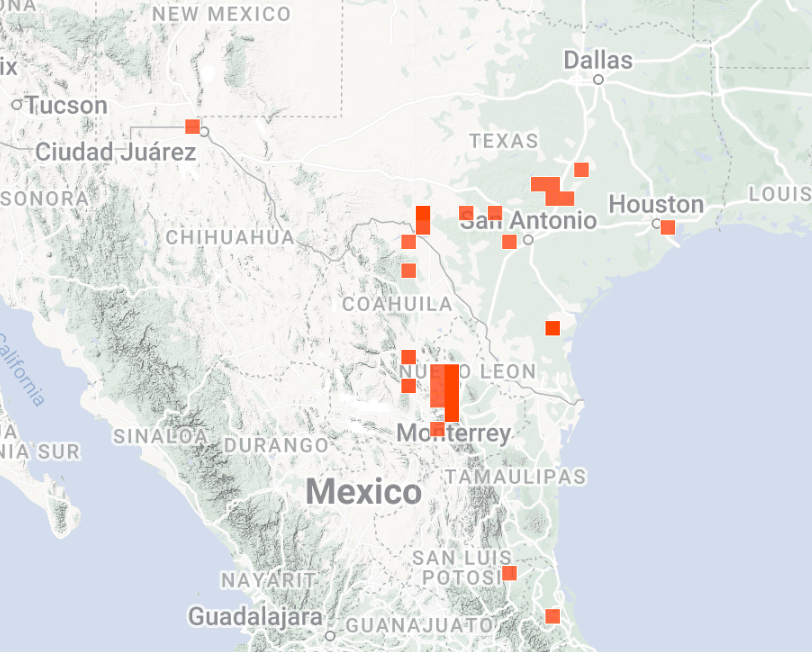
Further west in Texas, the Anacacho Orchid can be found in the Anacacho Mountains and around the Devil’s River in canyons and arroyos, right along the Texas-Mexico Border.
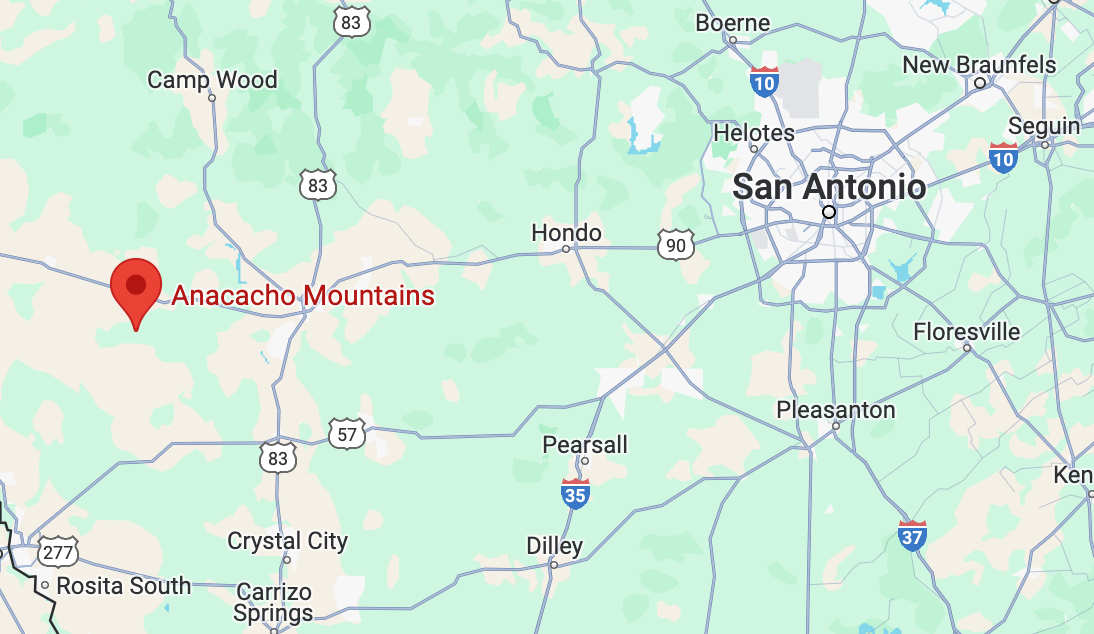
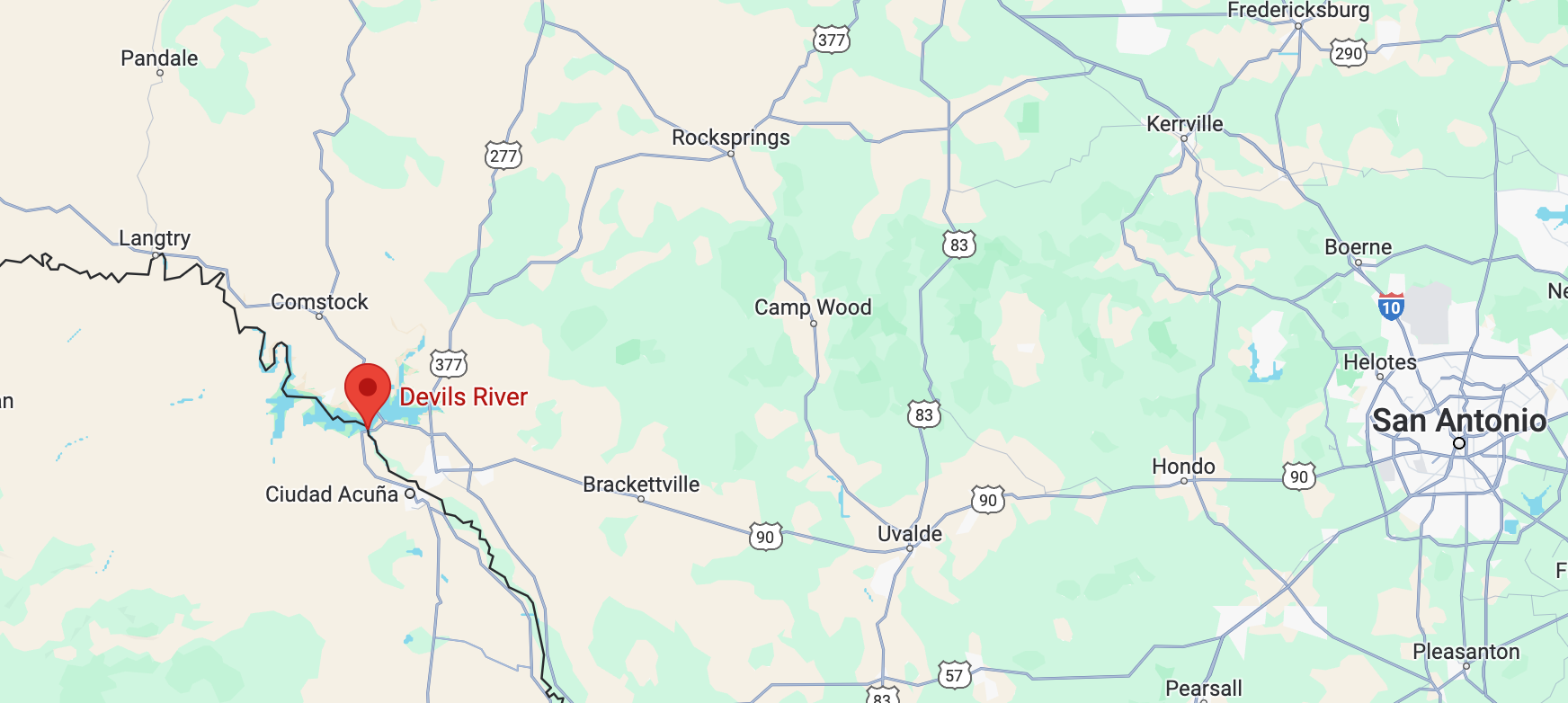
Anacacho Mountains (2 hours west of San Antonio) | Devils River (3 hours west of San Antonio)
The Benefits of the Ancacho Orchid Tree:
For Your Landscape:
- Attractive Flowers & Leaves in Spring—The Anacacho Orchid grows in a way that makes it enjoyable all the time, but its flowers show up in early spring. While much else blooms in spring, if there's anywhere on your property that's particularly barren during spring, that's a good reason to consider this tree.
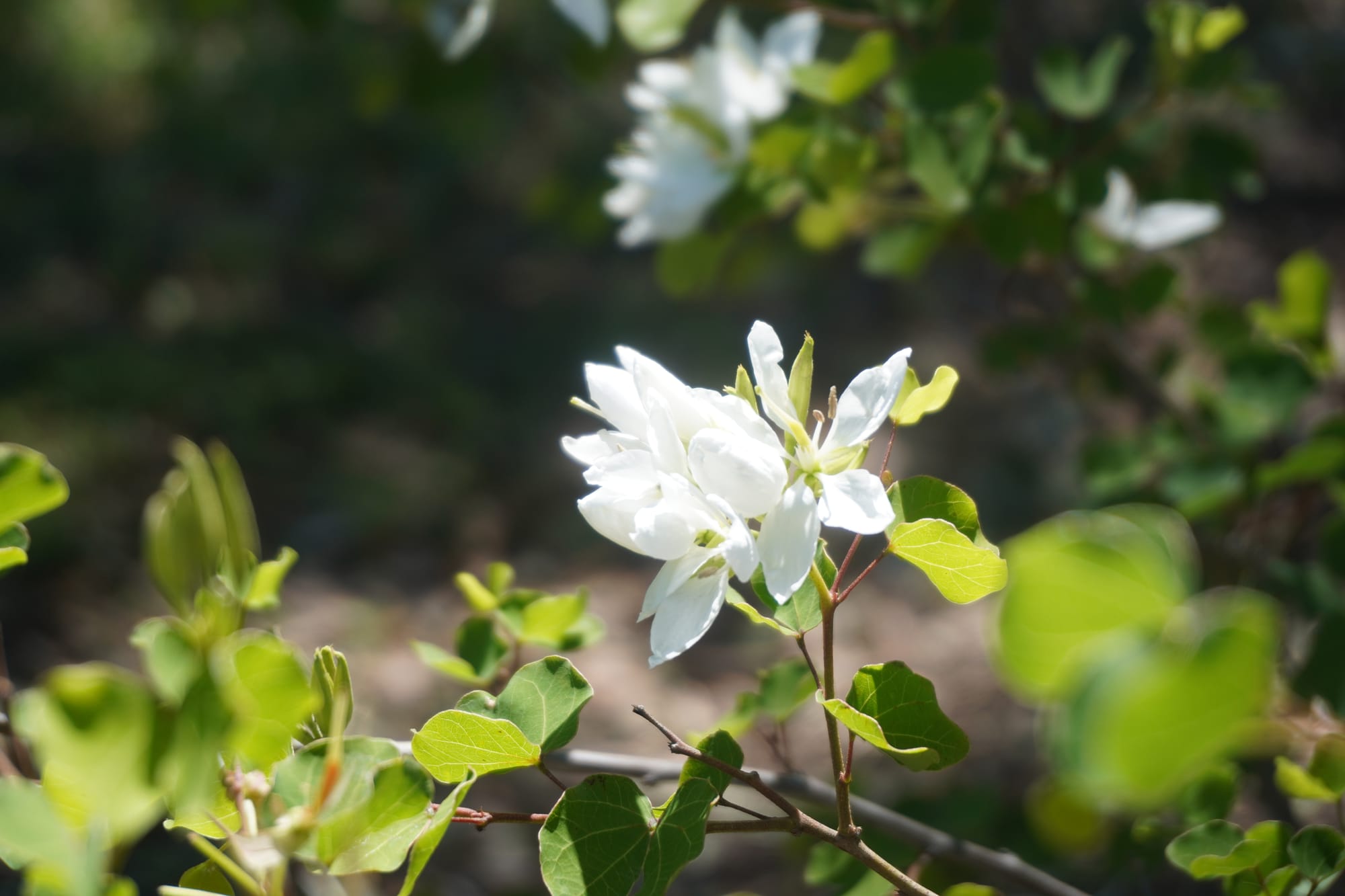
- "Patio Tree"—In Texas Native Plants: Landscaping Region by Region, the Anacacho Orchid is described as the perfect "Patio Tree." I believe that's because of its attractive look and the fact that it is a small, manageable tree. If you plant it close to a seating area, it will be interesting to look at just about all year round and won't be too intrusive.
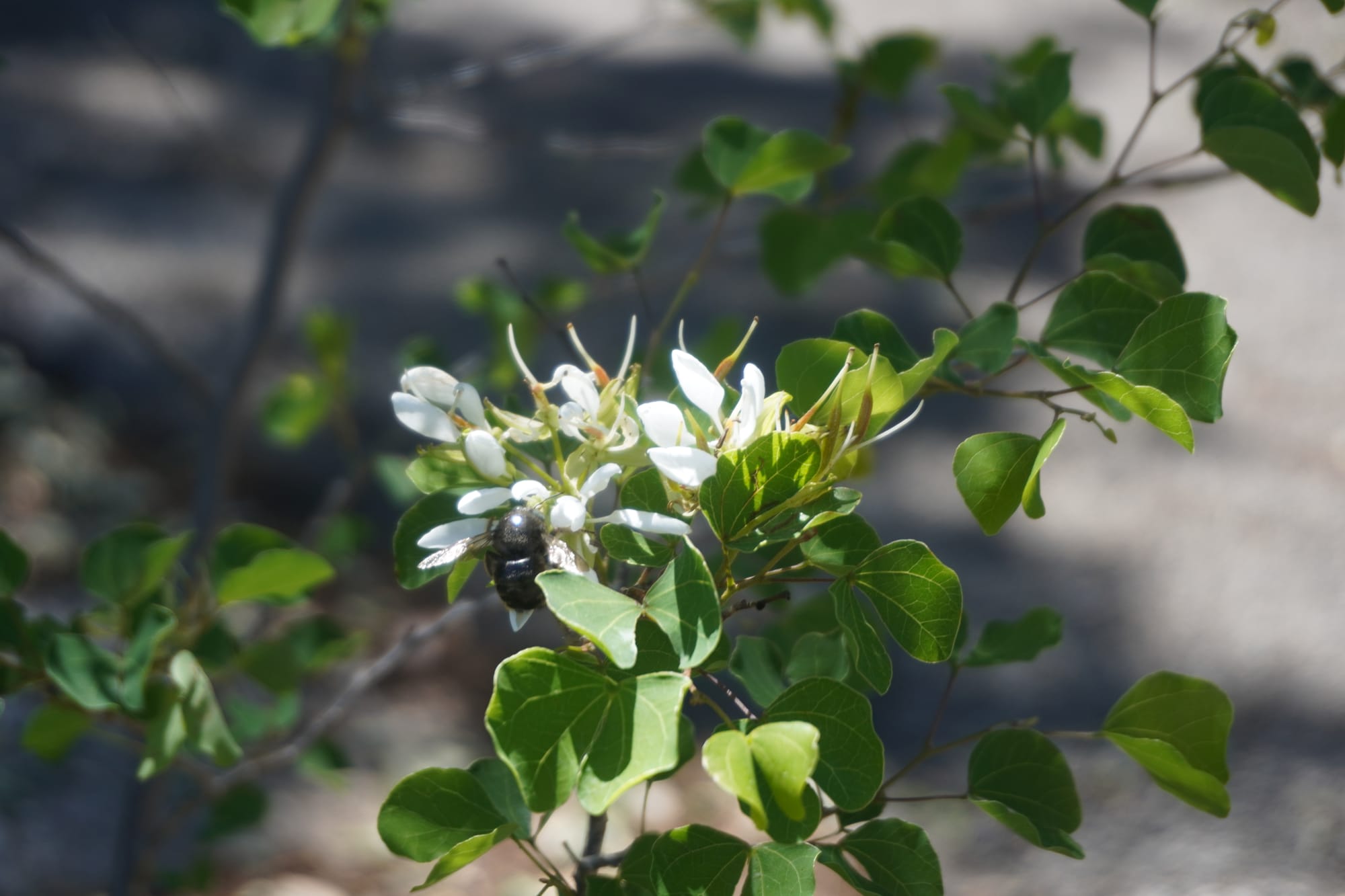
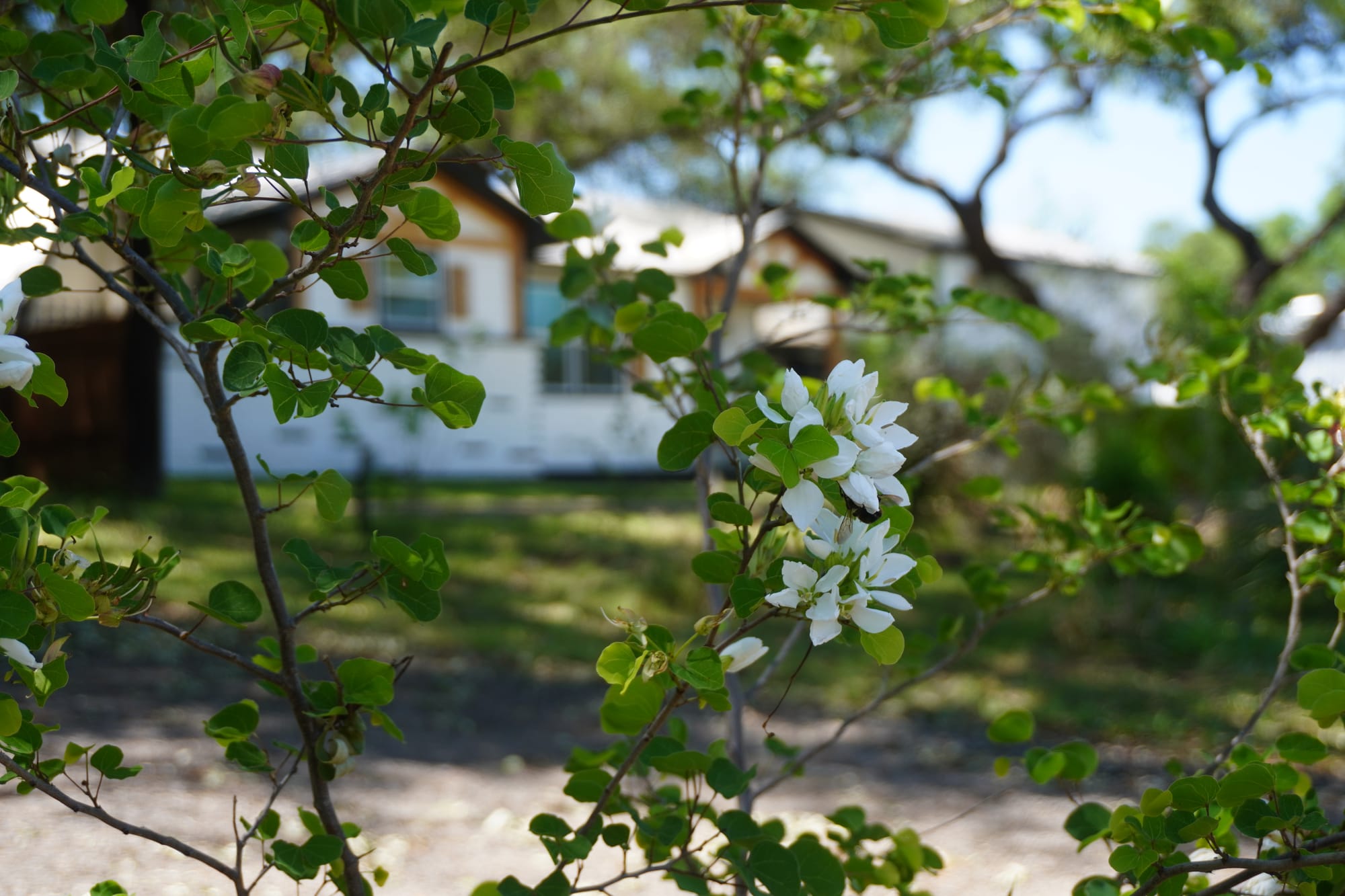
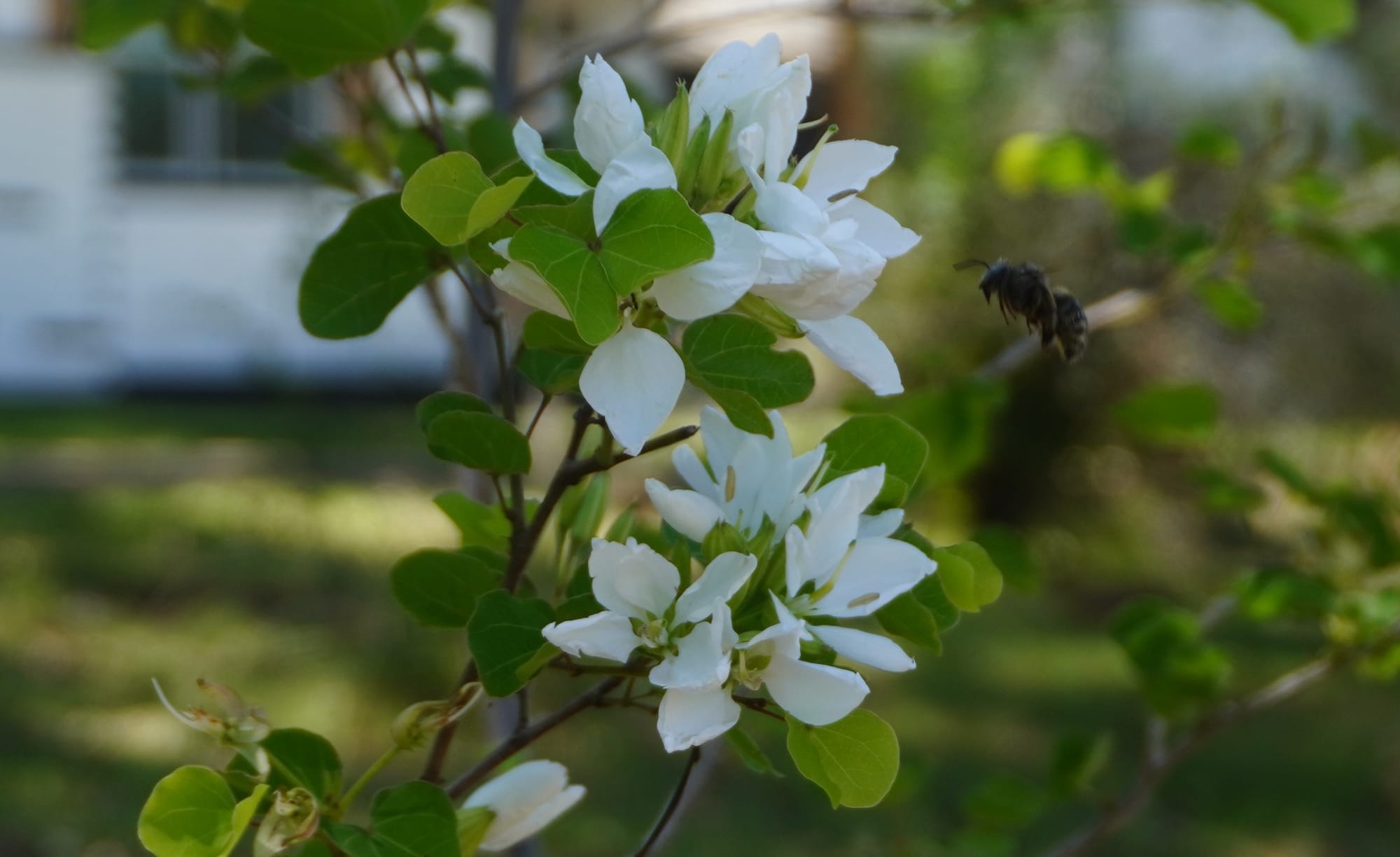
Carpenter bee visiting our Anacacho Orchid tree in Spring.
Attracts Pollinators–The Anacacho Orchid could make for an excellent central focus in a part-sun or full-sun pollinator garden. While I don't see many butterflies visiting the tree, I see plenty of bees. I've noticed the Anacacho Orchid Tree installed as a focal point in other pollinator gardens around San Antonio.
For one, if you visit Confluence Park's Friendship Garden, you'll see one planted there, with Lantana, Mealy Blue Sage, and Autumn Sage around its base.
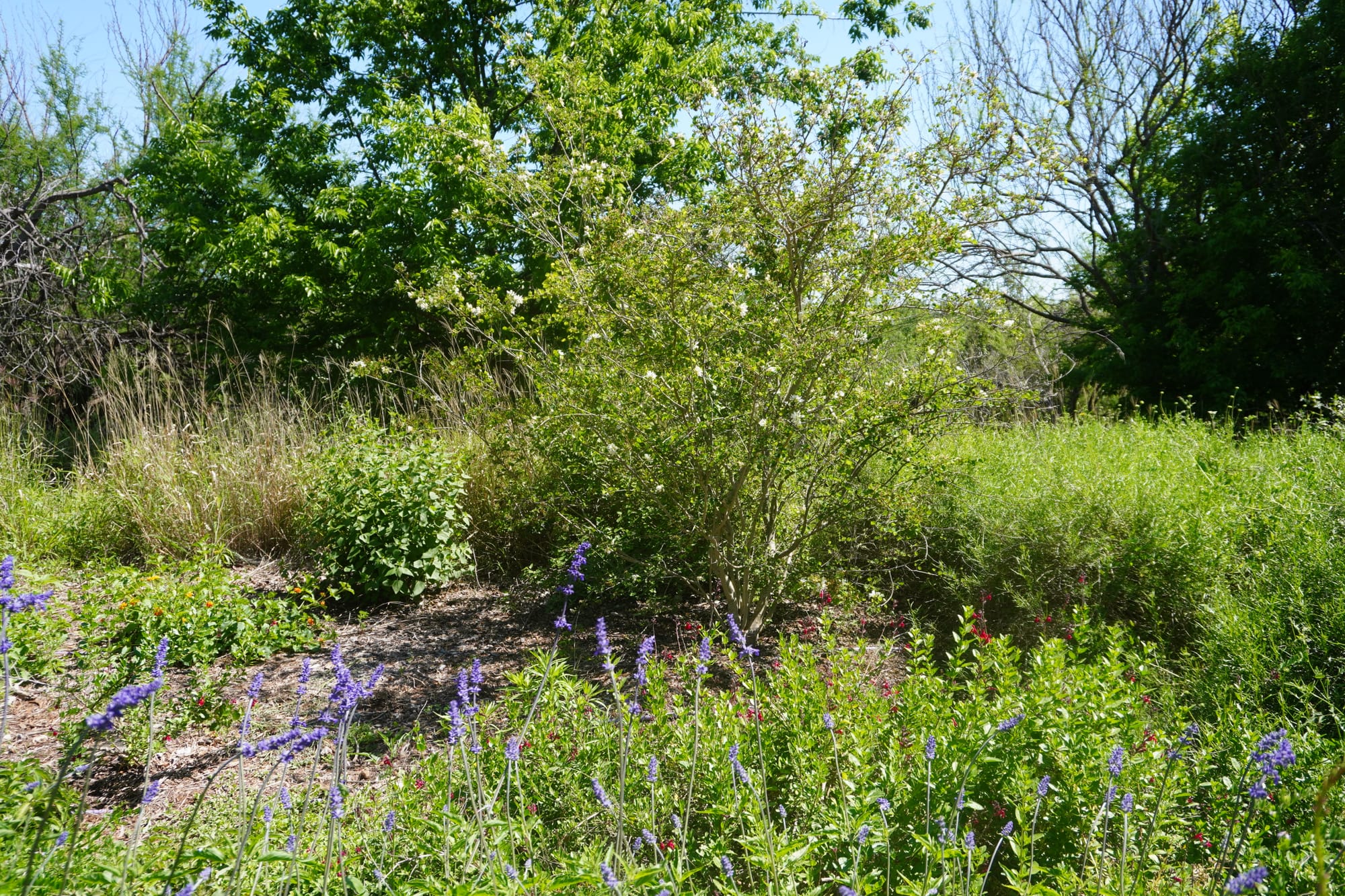
For Wildlife:
- Nectar Source for Pollinators–Do the bees a favor and plant an Anacacho Orchid. The blooms are prolific, and in our second year with the tree, it was well-visited and full of life.
- Nitrogen-Fixer - As a legume, the Anacacho Orchid is a nitrogen-fixer, meaning it converts nitrogen from the atmosphere to an available form in the soil to benefit the plants around it. This can help you if you consider interplanting this tree near high-value fruit trees, say, a Mexican Plum.

Planting & Care:
Where is the best place to plant an Anacacho Orchid?
- Partial Sun/Shade–The Anacacho Orchid tree is an understory tree, so it's most likely meant to grow in some shade. I think we selected a good spot for our tree; however, the leaves wilted in the peak summer sun. If I were to plant a second, I might choose a place with more dappled sun all day than intense sun for 4+ hours.
- Where You Want a "Small Tree" – If you are looking for a showy, interesting plant to put near a patio, this is a good candidate. Or as well, if you need a focal point in a pollinator garden, that's also a good option. The Anacacho Orchid is an elegant tree, in my opinion, won't offer much shade (this could be a benefit for lower-growing flowers) and isn't destined to grow that tall.
- Drier Conditions, Preferrable - Given the Anacacho Orchid tree's native distribution (Southwest Texas and Mexico), San Antonio might even be on the moister side of this tree's tolerable range. Be sure to consider the moisture levels generally of your region, and if there's any concern, identify a drier location on your property. Our soil is majority clay, which isn't known for it's drainage, and our Anacacho Orchid seems quite happy.
- Consider Southside of Buildings for Winter Wind Protection–This becomes more important the further north you are, but, many sources I referenced suggested planting the Anacacho Orchid on the southside of a structure to protect it from cold winter winds. Granted, after this last winter, our tree looked reasonably damaged, and we lost all the leaves. Perhaps if I took that advice, our tree would remain evergreen and keep its leaves through winter. The tree itself is fine, and the photo below shows the spring after.
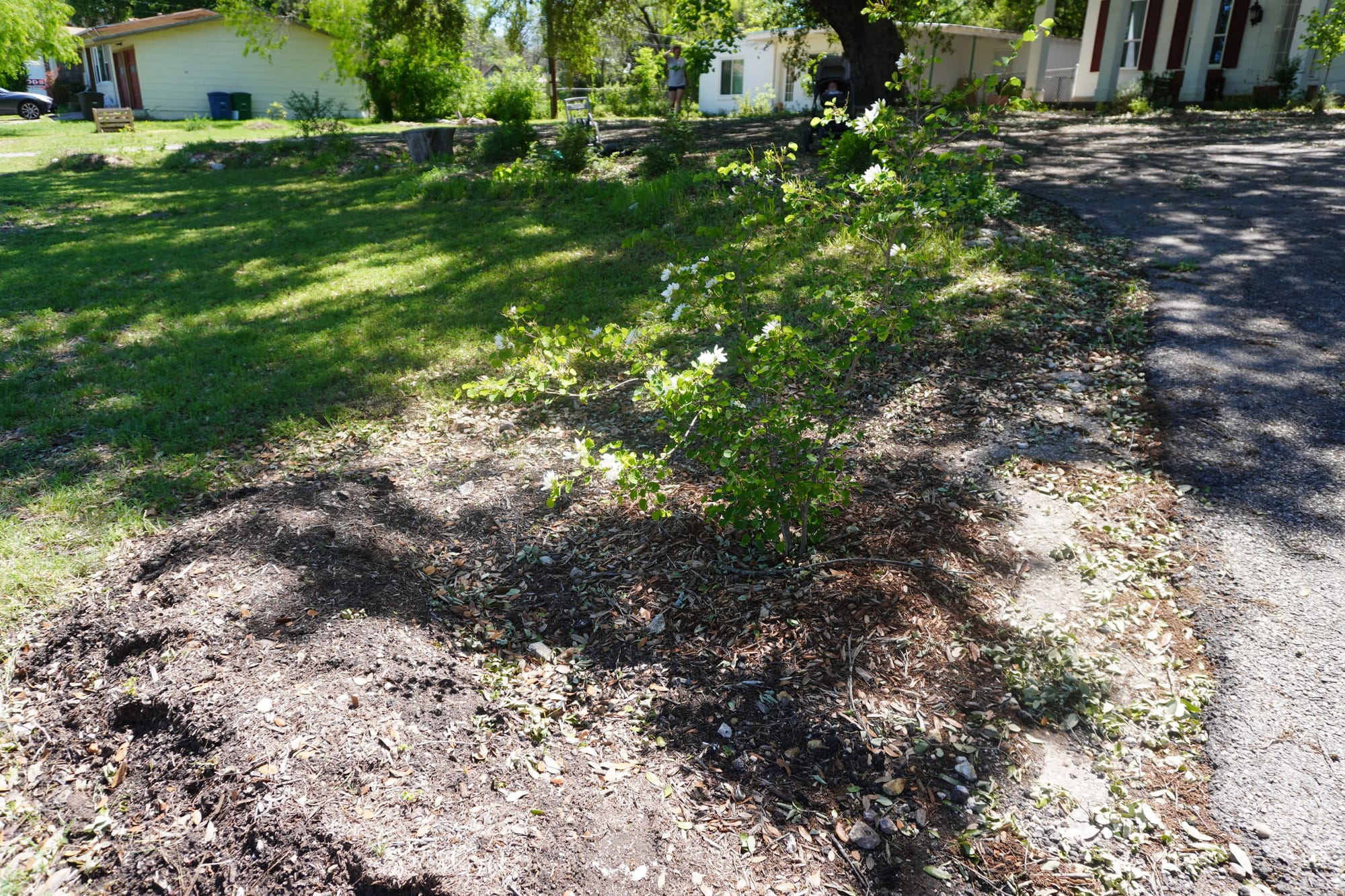
How do you care for an Anacacho Orchid tree?
Care/Maintenance: If you'd like a single-trunked tree then you'll need to prune the Anacacho Orchid into shape. Be careful when pruning; do not remove more than 1/3 of the bottom of the tree. This can weaken the tree. I, however, like the multi-trunked look and I typically always defer to the lower maintenance strategy.
Companion Plants:
In How to Grow Native Plants of Texas and The Southwest, author Jill Nokes suggests that the Anacacho Orchid "makes a nice contrast to spring-formed plants such as agaves, yuccas, nopal, and Cenizo.
I've also seen and come across some suggestions such as:
- Cenizo (Texas Sage)
- Flame Acanthus
- Black Dalea
- Lindheimer Muhly
- Texas Lantana
- Autumn Sage
- Mealy Blue Sage
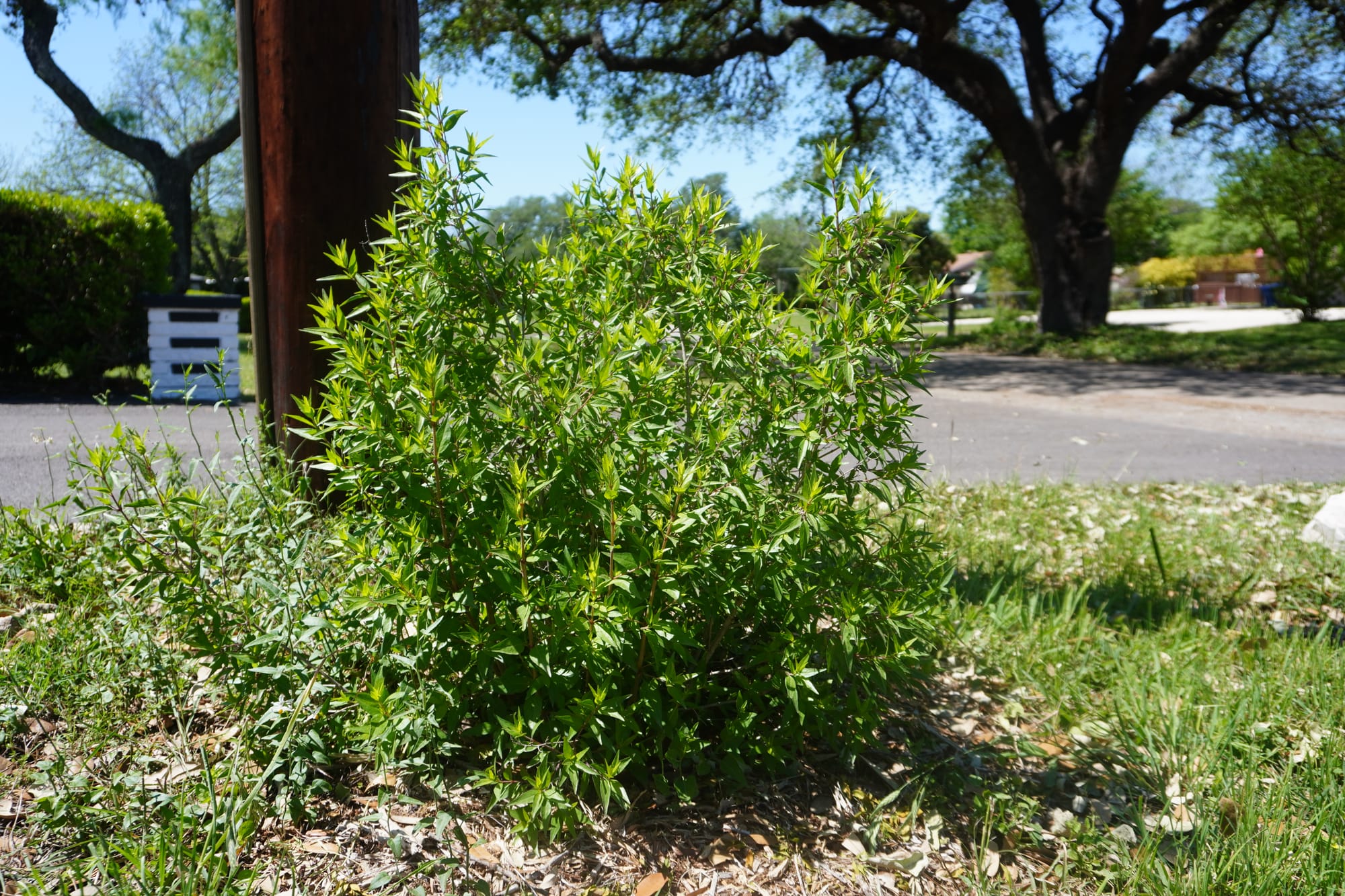
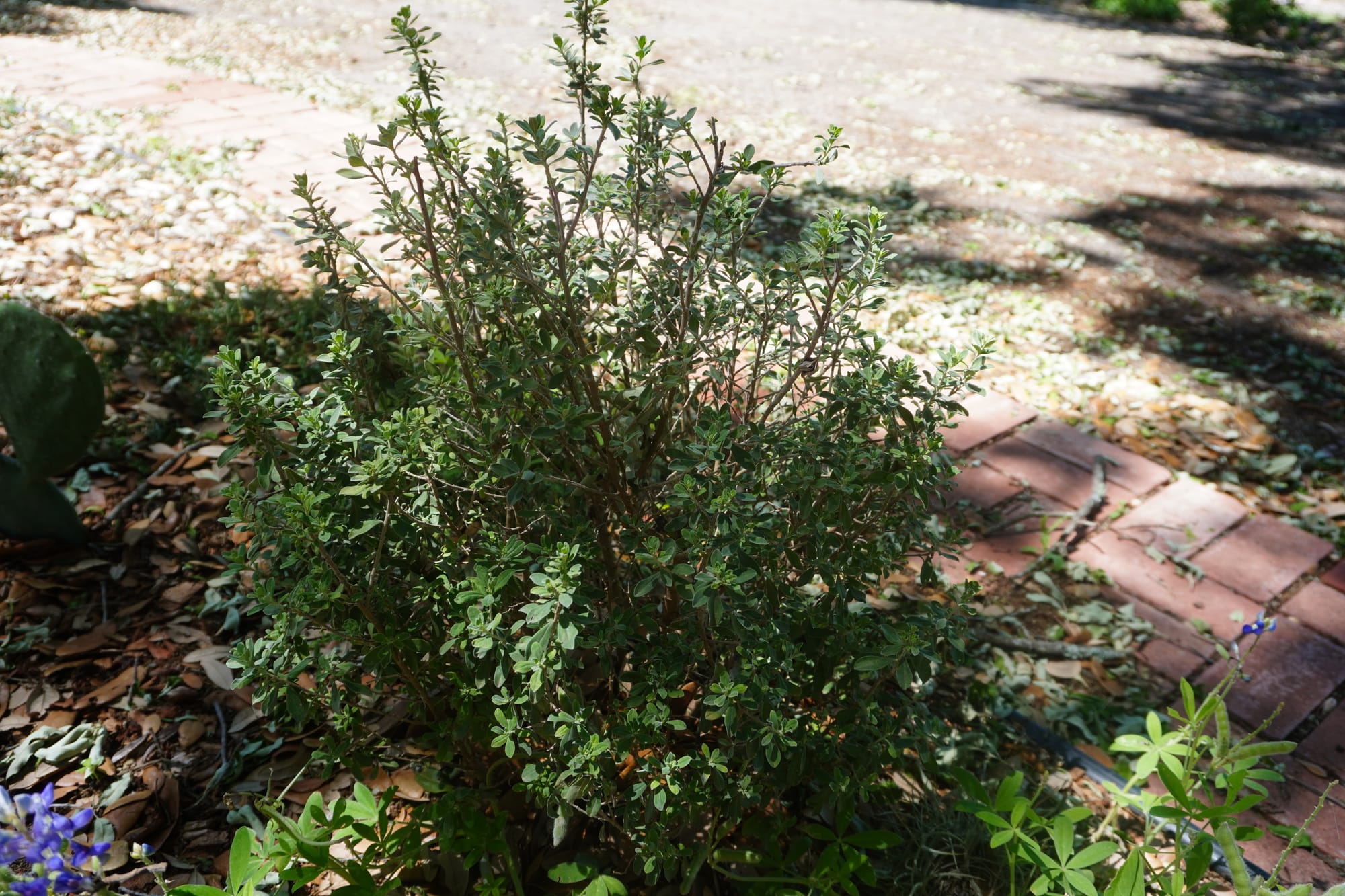
Left: Flame Acanthus | Right: Cenizo
Seasons: What to Expect
Spring: Depending on whether or not your Anacacho Orchid experienced freeze damage over winter, you may have lost all your leaves. Bright green new leaf growth emerges in spring (or later winter). After leaves comes your blooms, typically white if bought from a nursery.
Finally, you'll see the emergence of green fruits or seed pods.
Summer: Your tree may continue to bloom. It might only bloom after a rain. However, the green foliage remains, and the seed pods can begin to brown as the summer wanes. This tells you the seeds are ready to drop or be harvested (if you are so inclined).
In peak summer heat and sun, the leaves might wilt. If you are establishing a new tree (it's year one), water the tree deeply in the morning or evening at least 1x or 2x per week during peak summer.
Fall: Blooms will most likely subside, but foliage will remain. At this point, all seed pods should turn brown.
Winter: The Anacacho Orchid can act as an evergreen (keep it's leaves) in the right conditions. Mine doesn't; after a couple of hard freezes, the leaves browned and ultimately fell off as things began to warm up.
Don't remove any of your tree's apparent "freeze damaged" parts until all risk of freeze has passed. That can risk greater damage to the tree overall.
Medicinal/Edible Uses:
I could not uncover any specific medicinal or edible uses for the Anacacho Orchid tree.
If you know of any, do let me know!
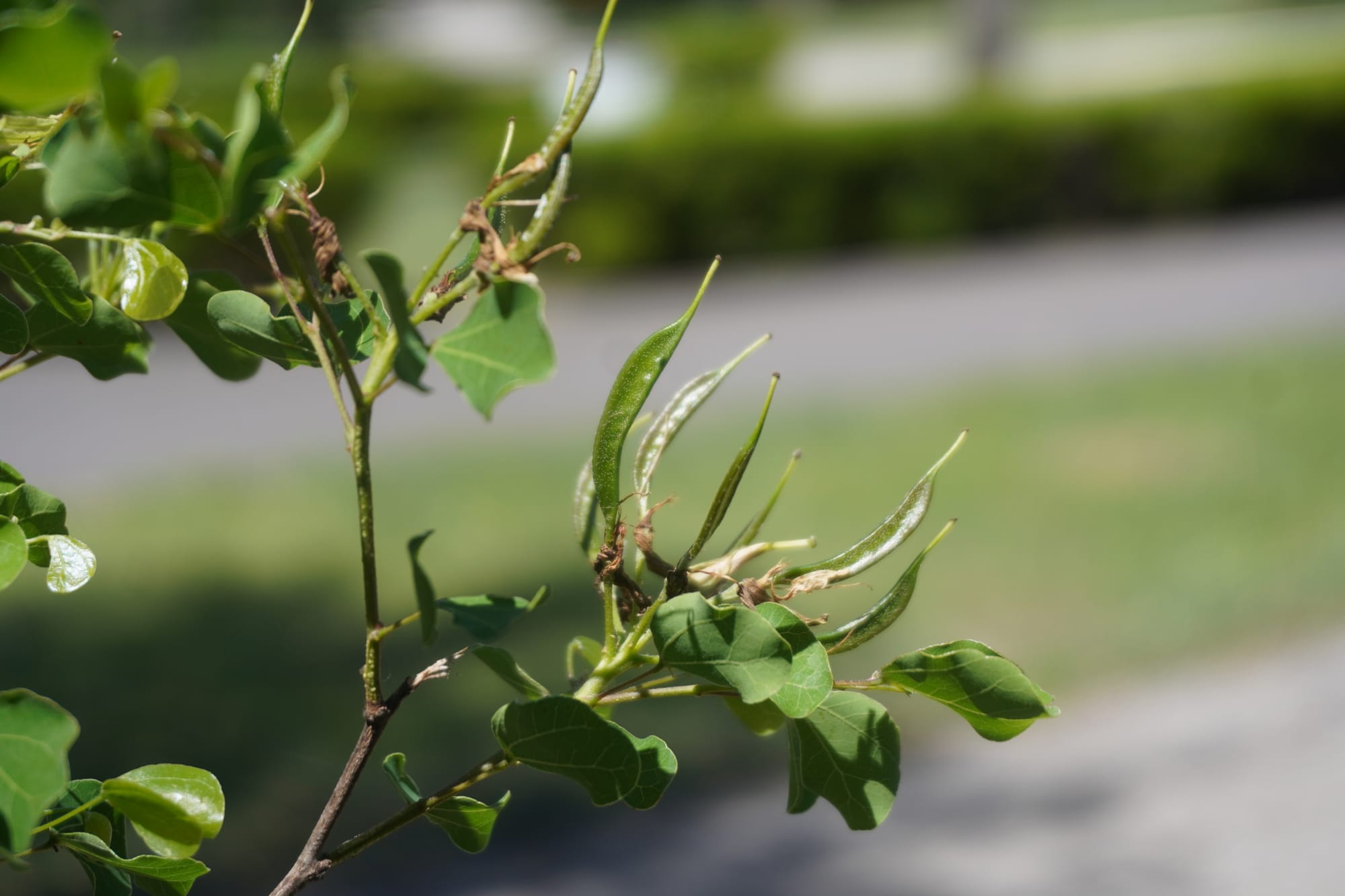
Propagation:
- From Seed–Growing an Anacacho Orchid from seed seems to be the most promising option. Collect the seeds in August, when they pods have turned brown. Dry them out in paper bags for a couple days. If you sow the seeds in fall, you must protect them in a cold frame. Otherwise, you can sow directly in the soil come spring. To store seeds over the winter, make sure they are sealed tight and it's recommended to be vigilant of any infestations.
- Cuttings–In my research I couldn't find any notable success with propagating Anacacho Orchid from cuttings.
Anacacho Orchid FAQs:
- How big does an Anacacho Orchid tree get? Most likely 6' - 12'.
- Is the Anacacho Orchid an evergreen? No, although, in mild winters, it might act like one and retain its leaves.

Sources:
Along with my own experience working with the Anacacho Orchid in my landscape and learning from my observations out in Texas' natural places (although I'll confess, I've yet to see a "wild" Anacacho Orchid, here are all the books and resources that I consulted in producing this page:
📚 Books
- How to Grow Native Plants of Texas and The Southwest: Revised and Updated Edition by Jill Nokes
- Native Texas Plants: Landscaping Region by Region by Sally and Andy Wasowski
- Wildflowers of the Texas Hill Country by Marshall Enquist
🌐 Websites
- (n.d.). Bauhinia lunarioides. Lady Bird Johnson Wildflower Center. https://www.wildflower.org/plants/result.php?id_plant=balu
- (n.d.). Anacacho Orchid Tree – Bauhinia lunarioides. Garden Style San Antonio. https://www.gardenstylesanantonio.com/garden-tips-blog/plant/anacacho-orchid-tree/

